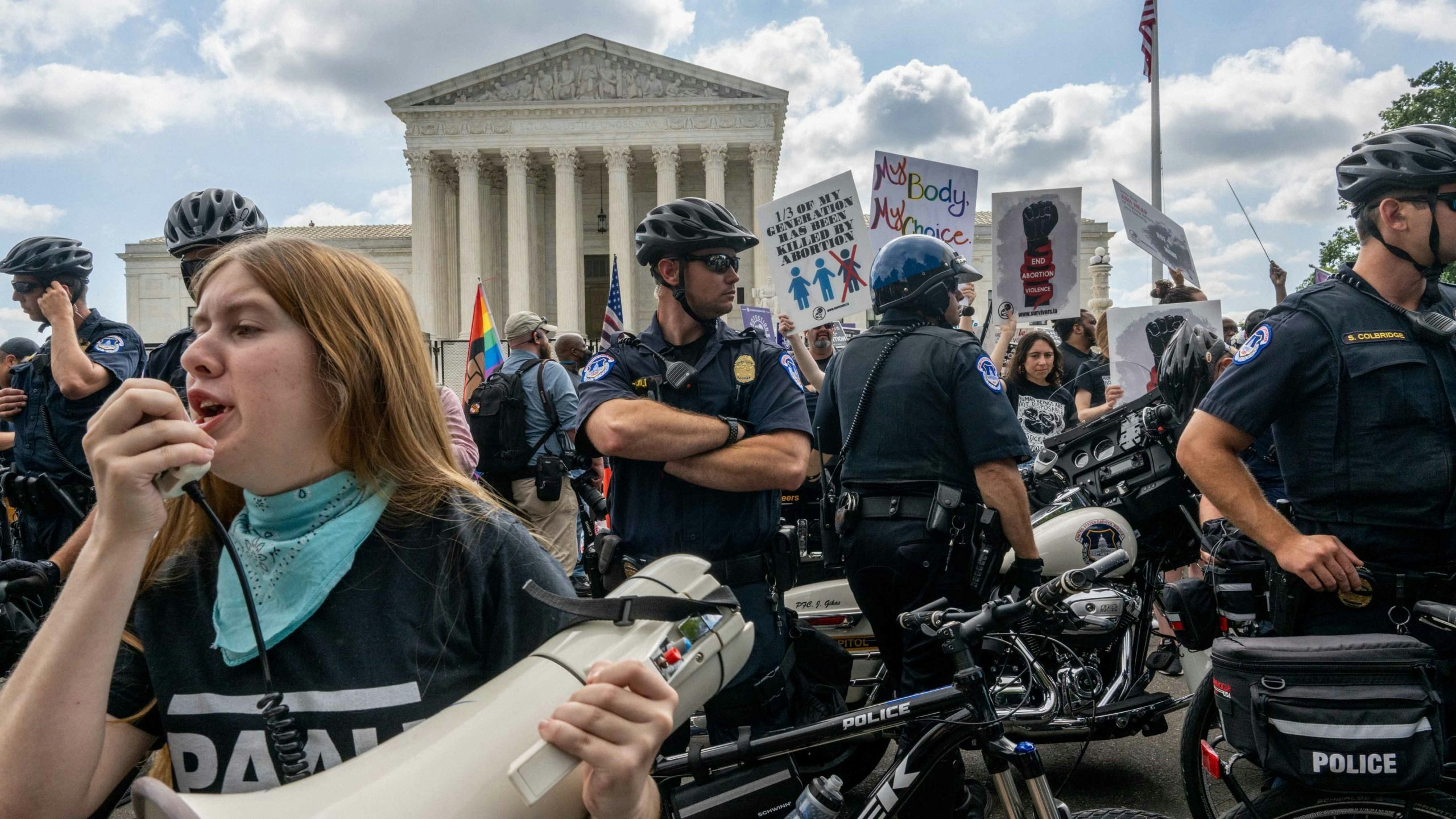There is no constitutional right to abortion, the U.S. Supreme Court ruled Friday morning in a ruling putting the decision of whether abortions will be allowed in the hands of the states.
In a 6-3 majority opinion, the court overturned the 1973 landmark abortion ruling “Roe vs. Wade,” which declared abortion a constitutional right to be observed in all states.
“The Constitution does not confer a right to abortion … and the authority to regulate abortion is returned to the people and their elected representatives,” said a summary of the ruling.
The ruling stems from a lawsuit challenging a Mississippi law that prohibited abortions from being performed after the 15th week of pregnancy, several weeks before the point at which a fetus is considered viable outside the womb.
A lower court overturned the law as being in violation of Roe vs. Wade and an appeals court upheld that decision.
The challenge to the Mississippi law said it was contrary to the finding of Roe vs. Wade, but the Supreme Court, in the majority opinion written by Justice Samuel Alito, said Roe vs. Wade was a flawed ruling to begin with.
“We hold that Roe … must be overruled,” Alito wrote. “The Constitution makes no reference to abortion, and no such right is implicitly protected by any constitutional provision…”
Alito said Roe vs. Wade’s errors were perpetuated as courts relied on it to make rulings on abortion after 1973.
Justices Stephen Breyer, Sonia Sotomayor and Elena Kagan, in a dissenting opinion, said the majority opinion disregards years of balancing the ability of states to regulate abortions in a way to protect life of a viable fetus with a woman’s right to choose whether to obtain an abortion.
“(The majority) says that from the very moment of fertilization, a woman has no rights to speak of,” the dissent said. “A state can force her to bring a pregnancy to term, even at the steepest personal and familial costs.”
The dissenting opinion also argued the majority of the court disregarded the effect its ruling will have on women seeking an abortion who live in states where it is not legal.
“Today’s decision, the majority says, permits ‘each state’ to address abortion as it pleases,” it said. “That is cold comfort, of course, for the poor woman who cannot get the money to fly to a distant state for a procedure. Above all others, women lacking financial resources will suffer from today’s decision.”
Meanwhile, Justice John Roberts, in a specially concurring opinion, chastised the court for overturning Roe vs. Wade when all it had to do was rule on whether Mississippi’s time period for allowing abortions fell within constitutional limits.
“None of this … requires that we also take the dramatic step of altogether eliminating the abortion right first recognized in Roe,” he wrote.
Roberts noted that in its first brief to the Supreme Court, even Mississippi officials said a review of the state’s law would not require the court to overturn Roe vs. Wade.
Roberts said he did not share the certainty about laws surrounding abortion that both the majority and the minority held.
“Both the court’s opinion and the dissent display a relentless freedom from doubt on the legal issue that I cannot share,” he wrote. “I am not sure, for example, that a ban on terminating a pregnancy from the moment of conception must be treated the same under the Constitution as a ban after 15 weeks.”
Meanwhile, Justice Brett Kavanaugh, in his own concurring opinion, praised the court for separating the issue of abortion from the Constitution.
“In my judgment, on the issue of abortion, the Constitution is neither pro-life nor pro-choice,” he wrote. “The Constitution is neutral and this Court likewise must be scrupulously neutral. The Court today properly heeds the constitutional principle of judicial neutrality and returns the issue of abortion to the people and their elected representatives in the democratic process.”





